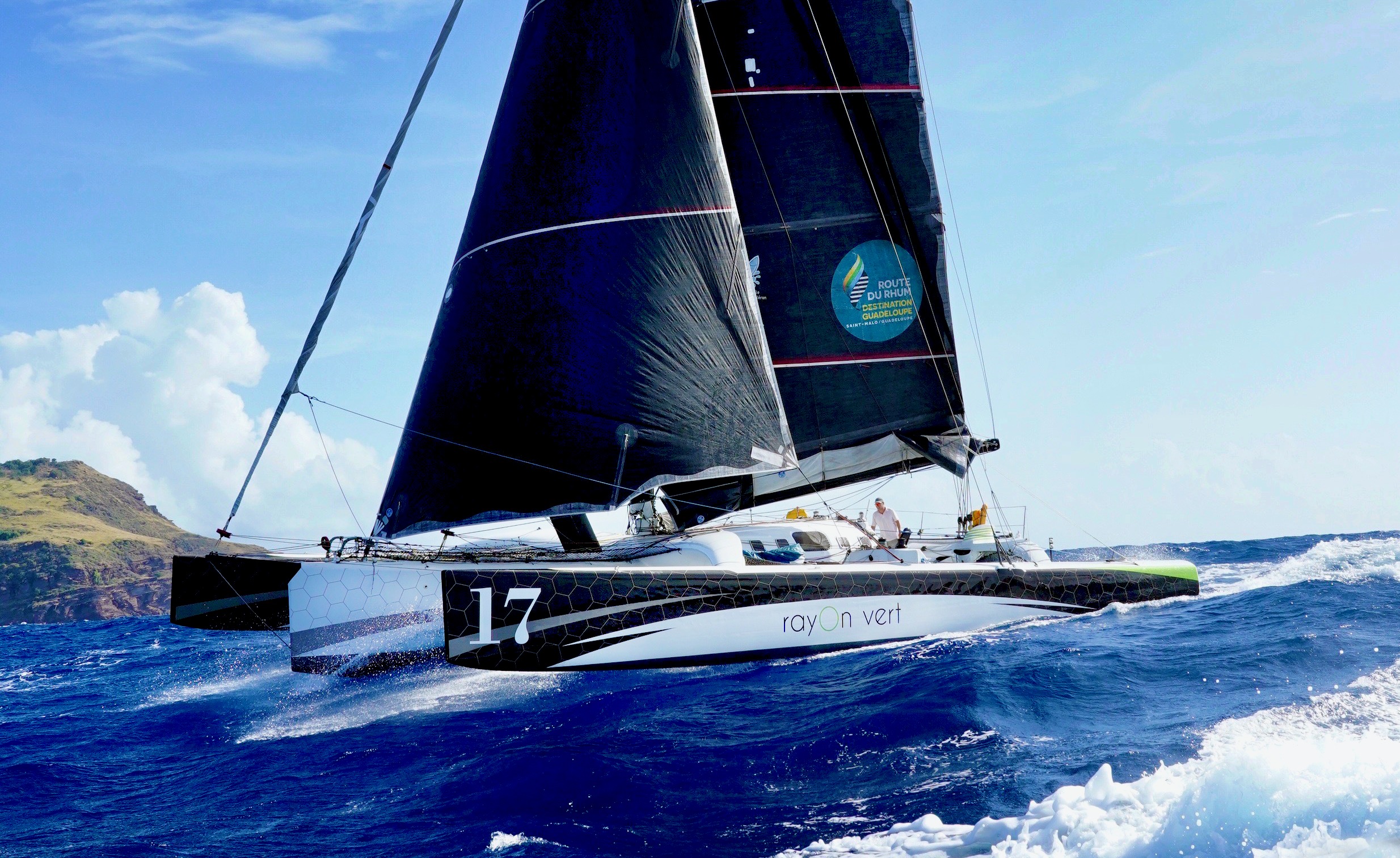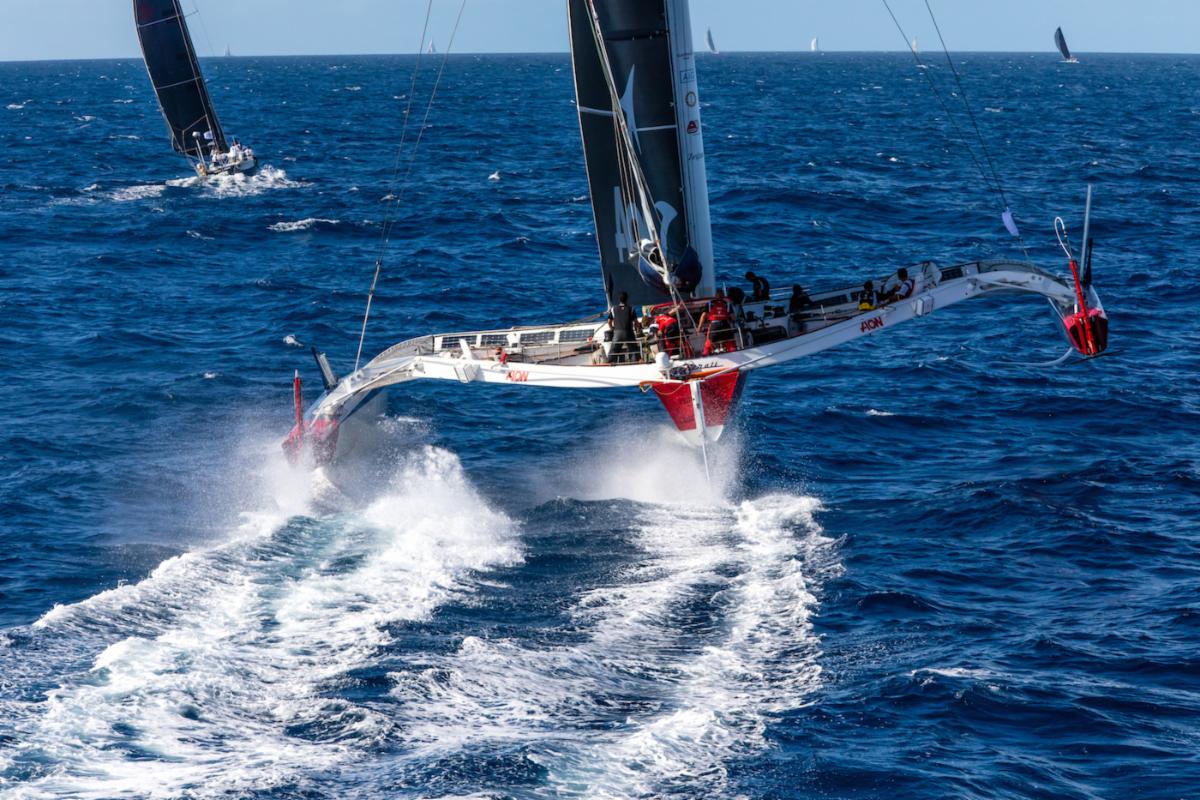Evolution with a purpose
In the 50 years since the birth of MOCRA, catamarans and trimarans have evolved to be competitive and efficient offshore racers.
06 August 2021
Advertisement
The Ultimes, the fastest offshore racing yacht around, might be the pace-setters in the 2021 Rolex Fastnet Race with the potential to get around even the new elongated course in less than a day. Not far behind them, though, will be the MOCRA class.
Since the MOCRA (Multihull Offshore Cruising and Racing Association) and its birth in 1969, multihulls have evolved hugely. Back in the day, many of these vessels were often either floating caravans with performance to match or feather-weight racing machines of questionable construction and engineering. In the intervening decades, massive steps forward in design, composite construction, and structural engineering have transformed these crafts.
One of the MOCRA’s best feats is its decades-long rule that has allowed profoundly different multihulls to compete fairly. But in this year’s Rolex Fastnet Race, this will be tested, with boats ranging from Tim Whittle’s 30ft T3 Trifoiler L’Albatros to Adrian Keller’s 84ft Nigel Irens-designed performance cruiser Allegra.
Advertisement
Leading the MOCRA class on the water will be the two MOD70s – Jason Carroll’s Argo and Giovanni Soldini’s Maserati. Of the two, Maserati has the more extreme foil package, including a ‘manta’ foil on the daggerboard on her centre hull, which allows her to ‘fly’ on three points.
While nimble trimarans, such as the former MOD70s, down to Andrew Fennell’s speedy looking Shuttle 39 trimaran Morpheus, represent the Grand Prix element of the class, the notable area of growth is fast cruiser-racer cats. The concept of performance catamarans with vast interior volume is not new – Tornado Olympic gold medallist Reg White’s company, Sailcraft built examples such as the Iroquois and Apache in the 1970s. Now, half a century later and with a better understanding of design, catamarans now break less, slam less, go upwind, perform well on all points and capsize about as often as monohulls sink.
In this year’s Rolex Fastnet Race, the fast cats will be largely represented by the four TS42 and TS5s from Lorient-based Marsaudon Composites. In 2019 the great supporter of French yachting, Christian Guyader, won the MOCRA class aboard his TS42 Guyader Gastronomie. He returns this year with the 50-foot TS5 Guyader Mext and a crew, including the former B&Q Castorama boat captain Loick Gallon and pro-sailor Gwen Chaplain.
“We won the last edition on corrected time, but also in real time. This year it will be harder because there are MOD70s that go much faster than us. It’s great to finish in Cherbourg,” said Chaplain.
“It makes the course a bit longer, but it adds to the game because we can play on the whole width of the Channel. It will be a great party in Cherbourg.”
In this Rolex Fastnet Race, the ultimate expression of a modern fast cruising catamaran is Allegra. The model was designed to be faster on all points of sail and more spacious than larger equivalent monohulls, something she demonstrated when she hit 29 knots on her first delivery to the Mediterranean.
“These boats do an amazing job of shifting a luxury apartment at pace around a difficult race course,” explains Allegra’s skipper Paul Larsen.
“I liken them to rally driving Bentley Continentals – they are hugely capable cars with incredible breaks and engines and handling packages, but at the end of the day, it is a Bentley Continental.”
“When things go wrong, it weighs a lot and you are not in the rally car you might have been in, that might have made it out of that situation.”
Another example is the Outremer 5X Racing No Limit, the all-carbon 60-foot flagship catamaran model. Among No Limit’s crew for this year’s Rolex Fastnet Race will be two-time OSTAR winner and America’s Cup helmsman Loïck Peyron.
But not all the fast cruising cats in the Rolex Fastnet Race are Swiss or French. A company producing the most successful examples in the UK is Dazcat across the Tamar into Cornwall. For Isle of Wight-based James Holder, this will be his fourth season and second Rolex Fastnet Race aboard his 42ft Dazcat 1295 Slinky Malinki.
Similar to Allegra, Holder says only now have they been able to reap the benefits of all their development and, ‘getting to know the boat’ time of the past seasons.
“We wanted a combination of things,” he explains. “The amazing thing about this boat – it is 13 metres, but if conditions are right, you can average 18–20 knots over a sustained period.”
“At the other end of the spectrum, we have probably the equivalent space of a 50–55-foot cruising monohull, so we can also enjoy family time.
Holder adds that one of his secrets to being competitive is a strict diet.
“We constrain ourselves heavily, we don’t take too much water, so we are not showering during the race, and we don’t have a watermaker. We put six beers in the fridge, which we have when we finish, and we eat well – that is all part of it, keeping together a great team, being happy and motivated, and we enjoy the good things.”
“People are not having to sit in on the rail all night in the wet and the cold, which is one of benefits of racing a cat like this.”
Advertisement
Advertisement
Advertisement







